July 30, 2024
By Frank Luca, chief librarian and curator of library collection
In the early stages of organizing an exhibition, a curator creates a checklist of all the materials that might be included. Inevitably, this list is whittled down as certain objects make the cut and others are dropped from consideration. Sometimes these "dead ends" comprise entire sections, as in the case of world's fairs materials excised from What's on the Menu, a two-part installation displayed in our lobby and library.
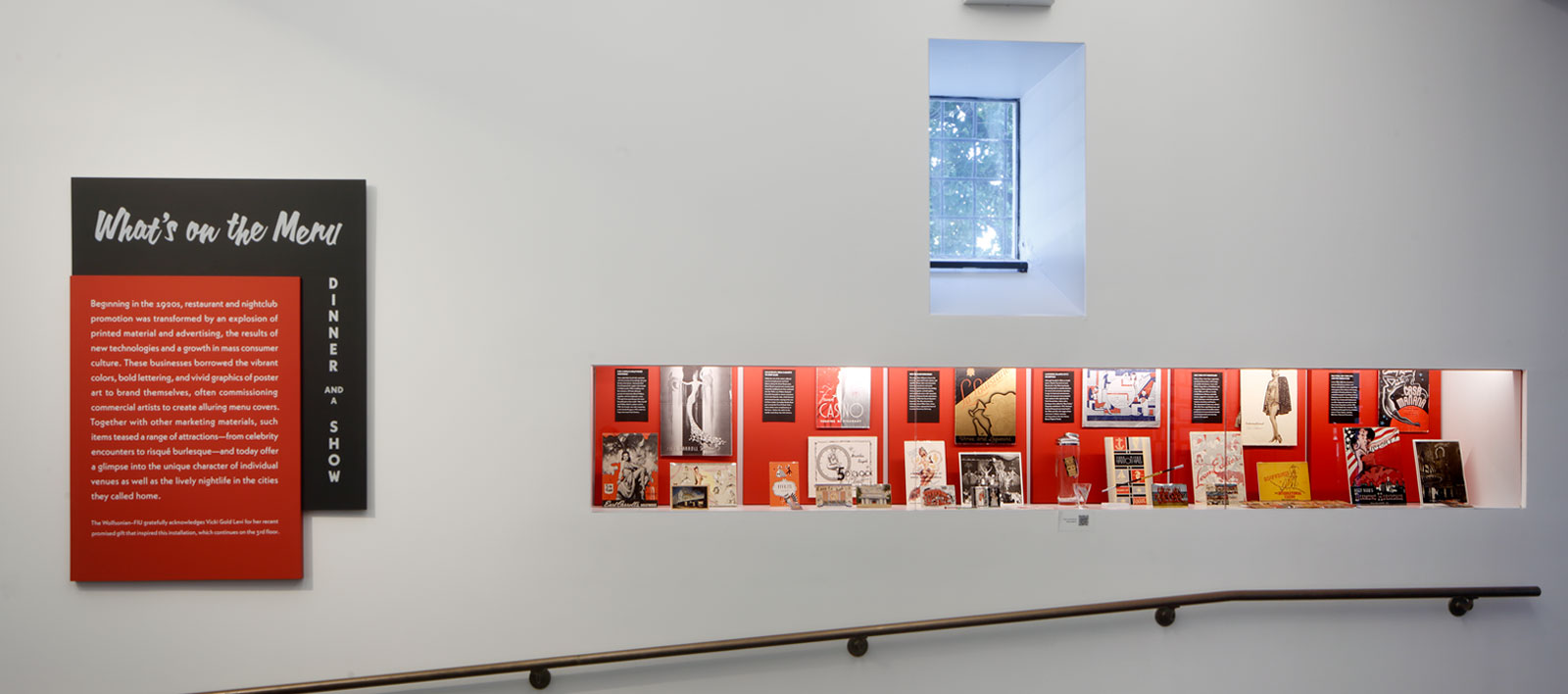
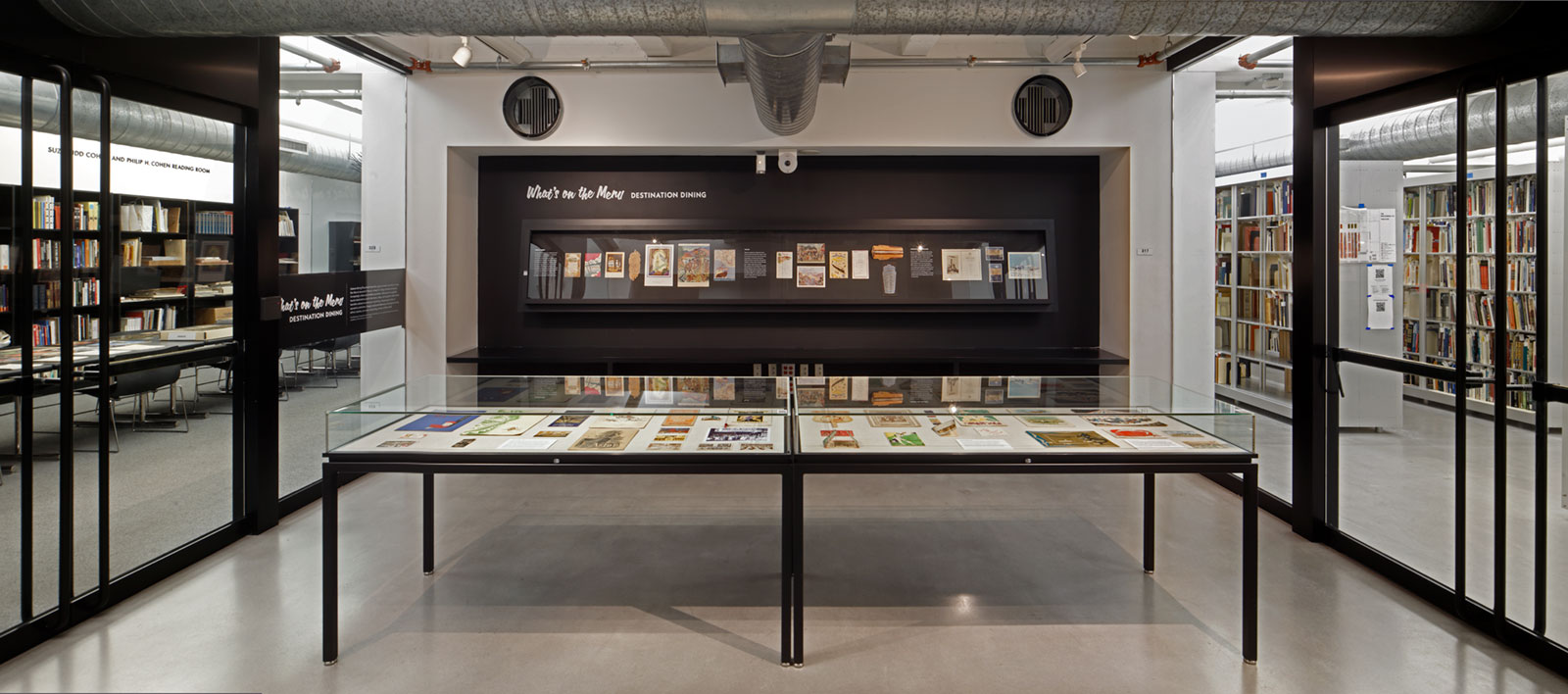
Thanks to some promised gifts and loans from library supporter and board member Vicki Gold Levi—plus a wealth of materials from the Mitchell Wolfson, Jr. Collection—I had many items from which to choose as we set about shaping What's on the Menu. Early in the curatorial process, I identified a set of world's fair-related menus and recipes, works that would be fitting for the show's exploration of cheaply produced restaurant takeaways and dining souvenirs from the early to mid-20th century. However, these items were ultimately not included in the installation due to space. Still, I thought some to be visually and thematically savory enough to merit discussion.
In reviewing the menu cover illustrations and other associated promotional materials produced for A Century of Progress International Exposition, held 1933–34 in Chicago, and the 1939 New York World's Fair, I noticed that few, if any, relied primarily on images of food. Rather, most of the artwork focused on iconic structures from the fairgrounds.
The Chicago world's fair became famous for showcasing spectacular aerial feats. Some fairgoers witnessed Italian aviator Italo Balbo and his squadron of seaplanes splash down in Lake Michigan after crossing the Atlantic; many attendees strained their necks to gape at the airplanes and airships flying restlessly overhead; and still other guests ascended the towers of the Sky Ride, boarding cable cars to get their own bird's-eye view of the grounds and pavilions, as represented in a menu cover for the Swift Bridge, likely a restaurant at the fair. The Chicago world's fair was also renowned for unveiling tall and sleek structures in the Art Deco and Modernist styles, seen in the cover of a menu designed for the Gas Industries pavilion and restaurant.
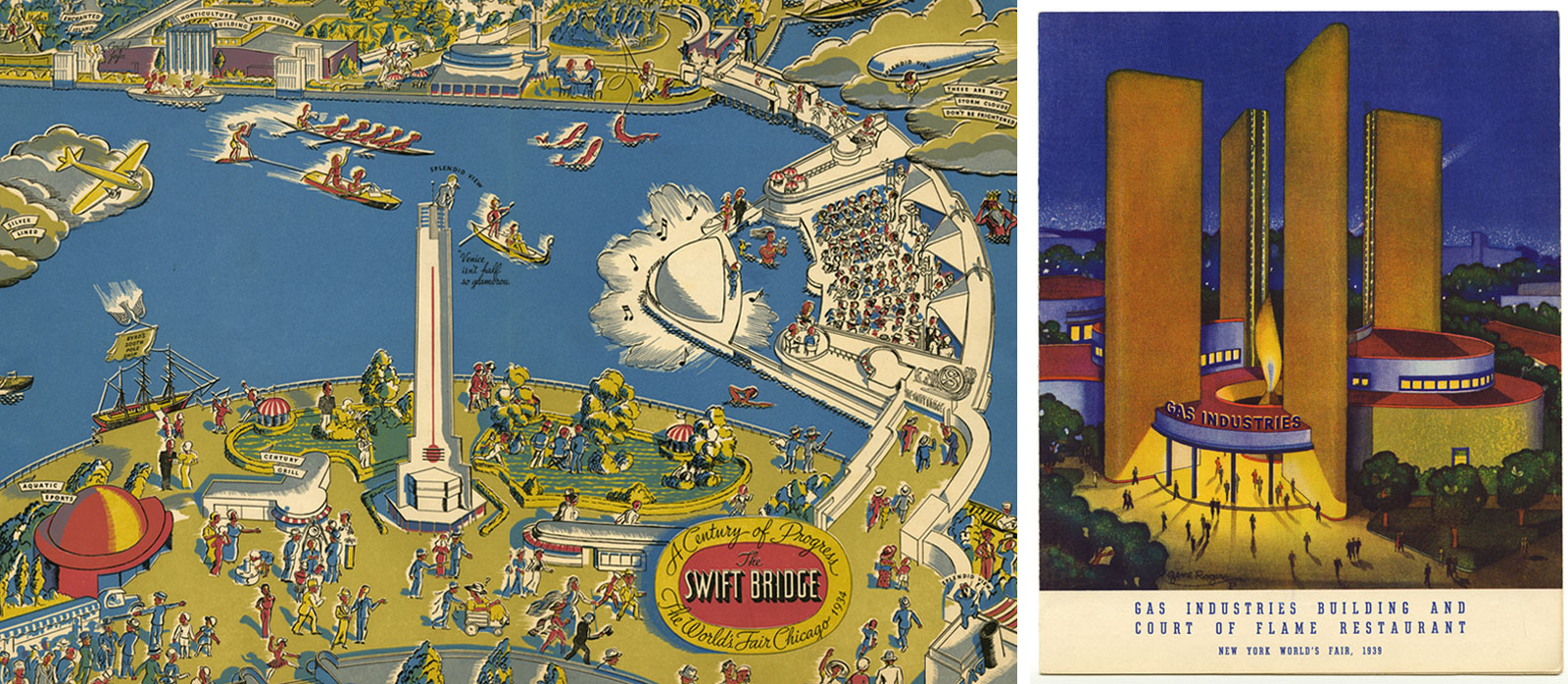
Materials produced in connection with the New York world's fair were similarly promotional in nature, and often looked to the fair for visual references. By far, the most monumental and recognizable structures on the grounds were the Trylon and Perisphere, a colossal obelisk and sphere designed by architects Wallace Harrison and J. Andre Fouilhoux. Built to be temporary, the 610-ft-tall Trylon and 160-ft-diameter Perisphere towered over the fair and were painted white to reflect classical ideals and a purity of design. Together, their image became so ubiquitous a promotional emblem that it served as a virtual logo of the exposition. You can spot it prominently featured on the covers of menus ranging from those printed by restaurant facilities on the popular midway entertainment section of the fair, to an exclusive dining menu commemorating a fête arranged for the commissioners of foreign pavilions.
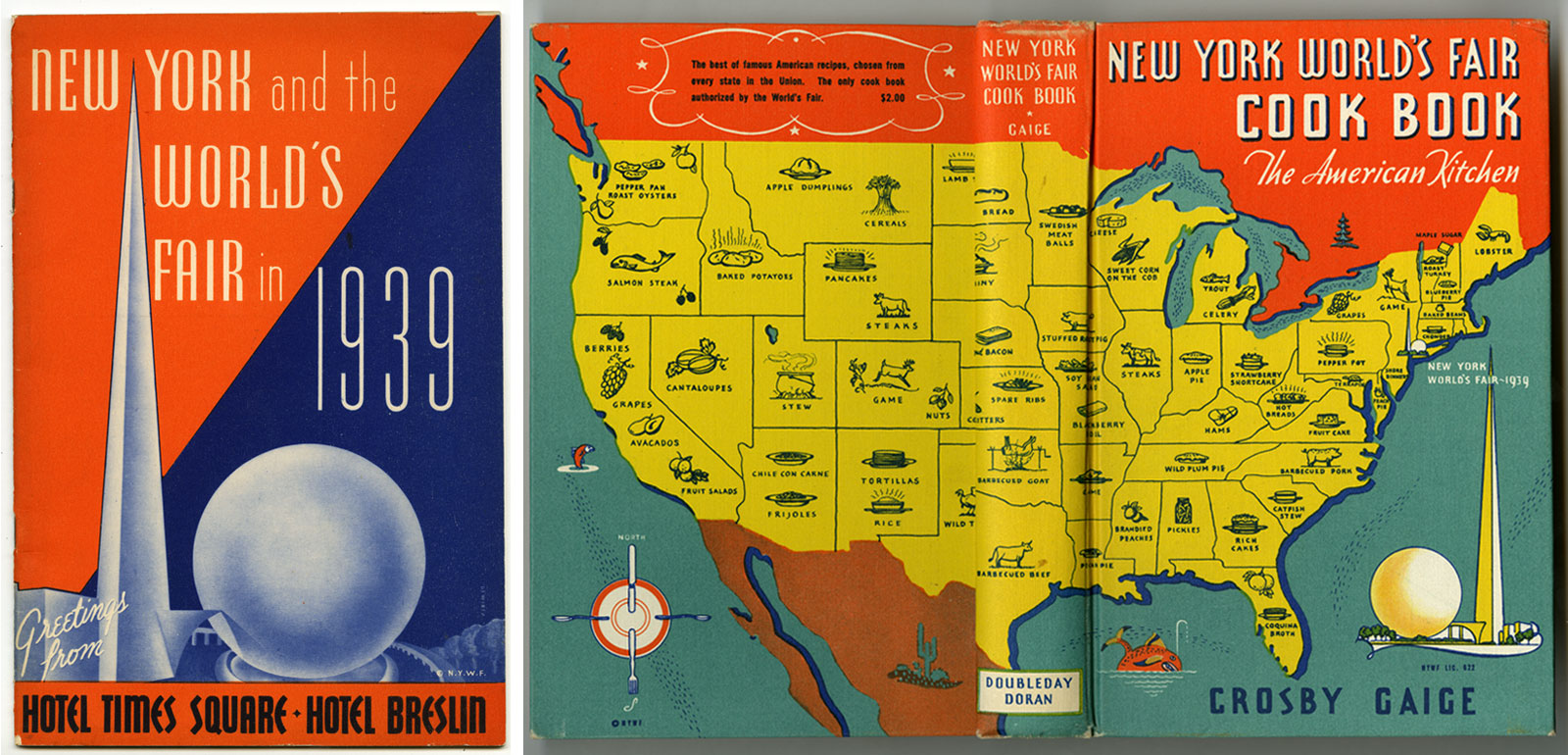
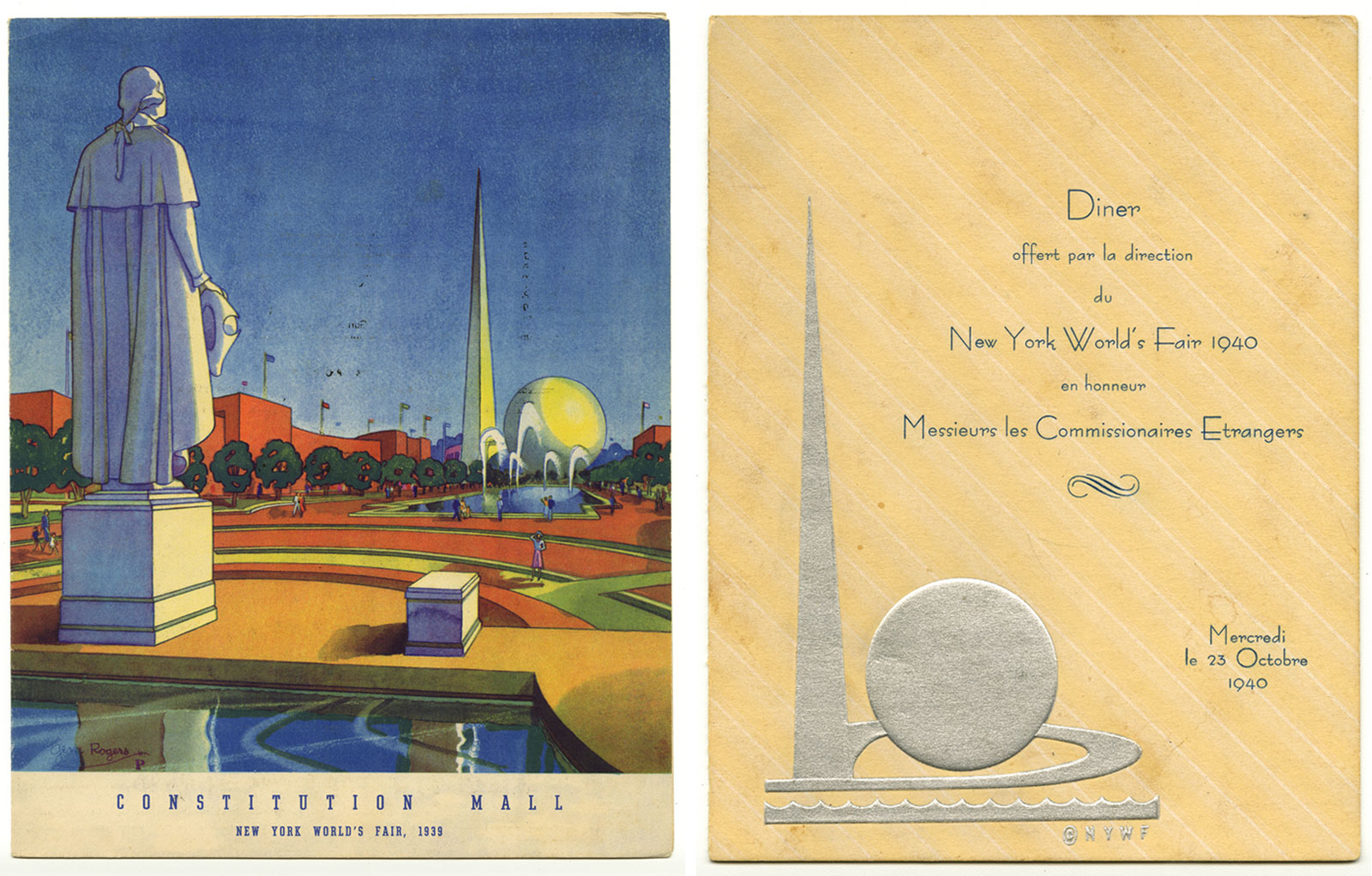
Of course, a handful of Wolfsonian collection dining and restaurant materials did include more specific company or cultural references, or they drew inspiration directly from the offered fare. For a Borden Food Corporation recipe booklet provided to New York fair attendees, the cover image relegates the company's exhibition building to the background to foreground the company logo, Elsie the cow (who looks like a poster child for mad cow disease). World's fair organizers assumed that attendees would get thirsty as well, as the end of U.S. Prohibition in 1933 immediately allowed concessions for beer; one die-cut beverage menu printed by the Old Heidelberg Inn for Chicago is even shaped like an old-fashioned German beer stein, while another for the Schaefer Center at the New York fair alluded to the company's long history of brewing beer, with smiling characters from across history raising their glasses in toast.
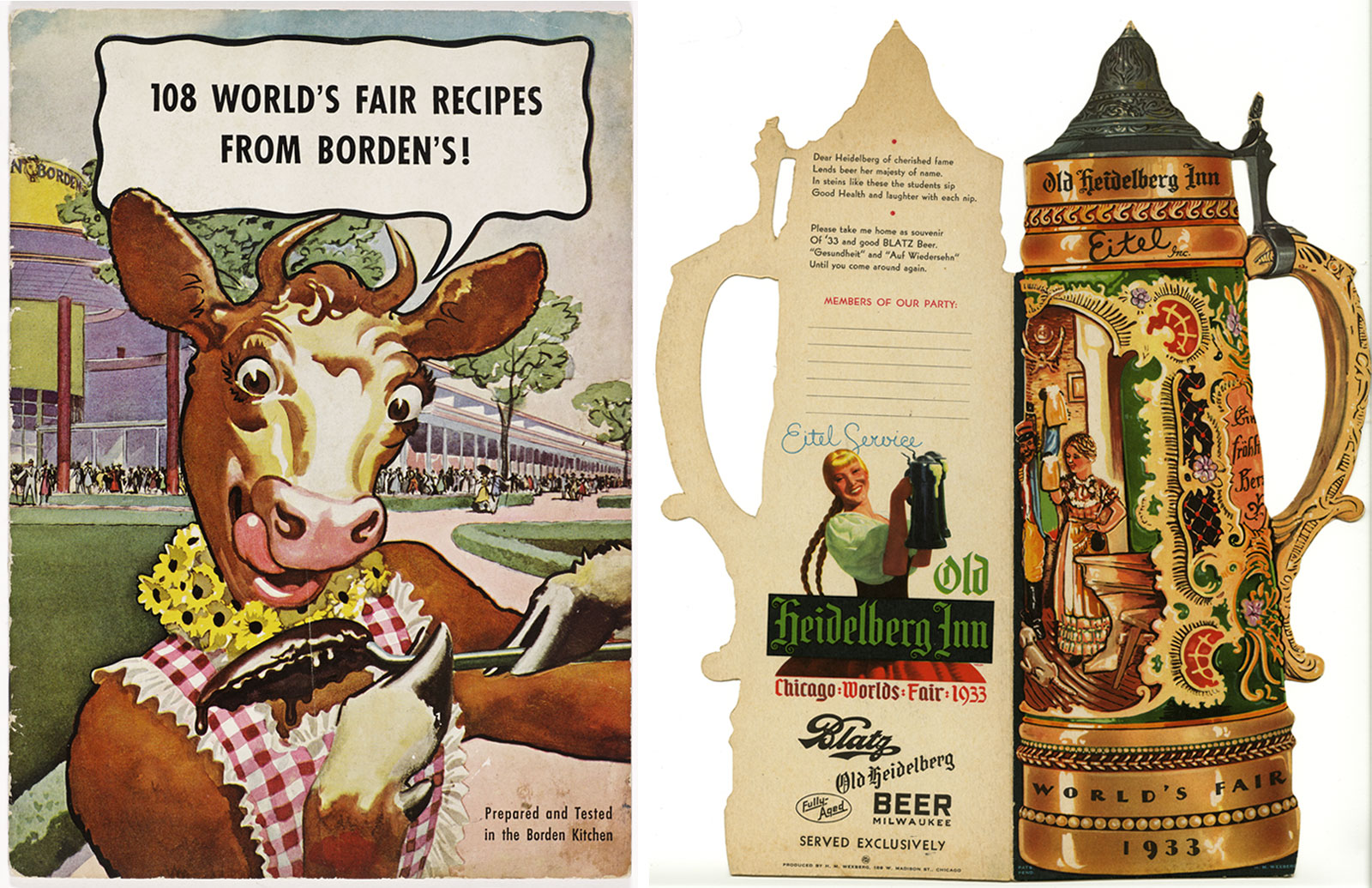
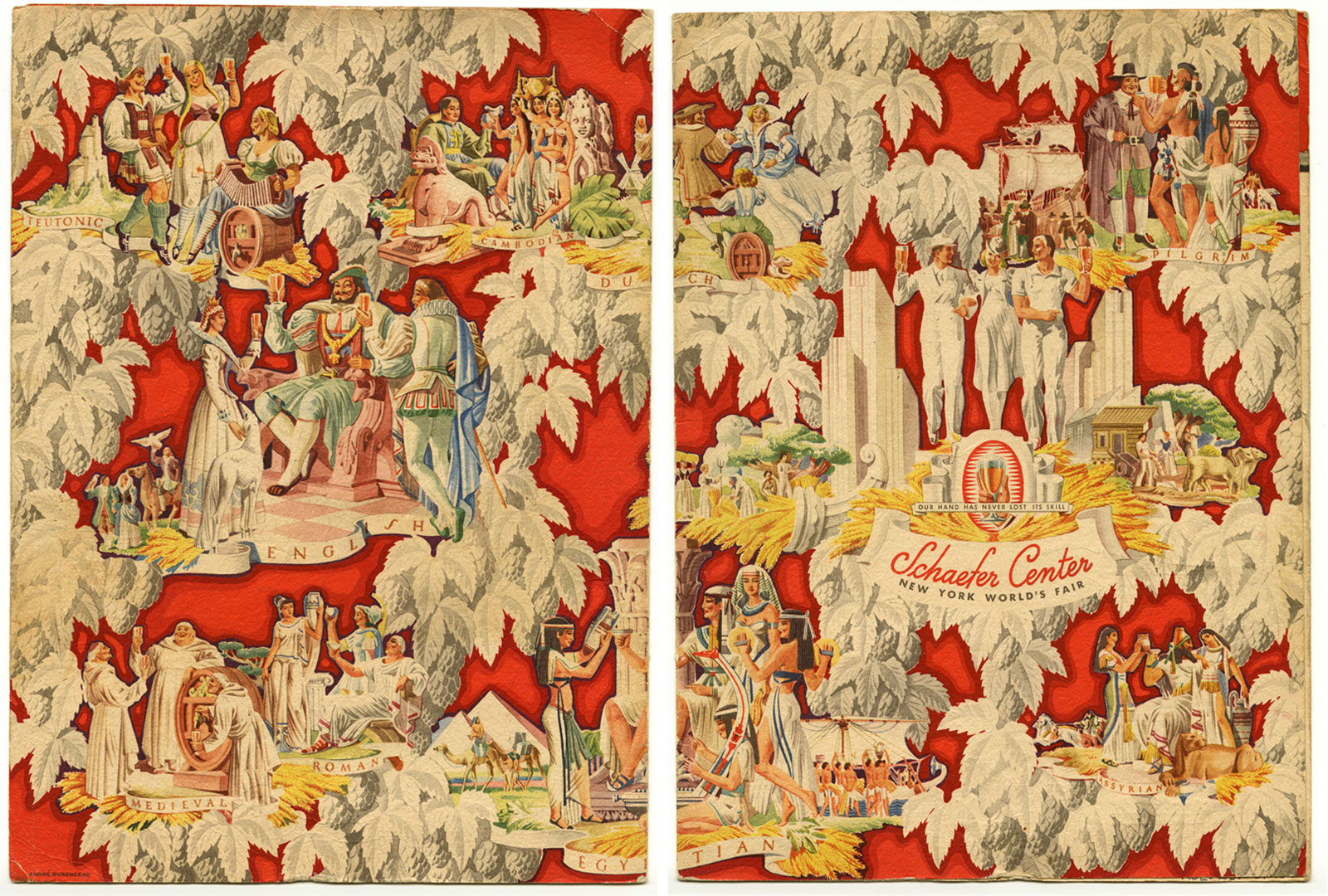
And similar to Epcot Center at the Disney World theme park, some world's fair menu covers celebrated the traditions of the international exposition's foreign participants—fairgoers visiting the garden café outside the Vienna pavilion at the Chicago fair, for example, could read from a menu with a cover illustration capturing the romance of a Viennese waltz. Or, at the New York fair, patrons might enter the Three Crowns Restaurant in the Swedish pavilion to choose from a menu featuring a blonde woman and children in native dress. It's interesting to note that the menu offered only three traditional Swedish dishes, indicating fair restaurants Americanized their cuisines to suit the palate of the largely domestic fairgoers.
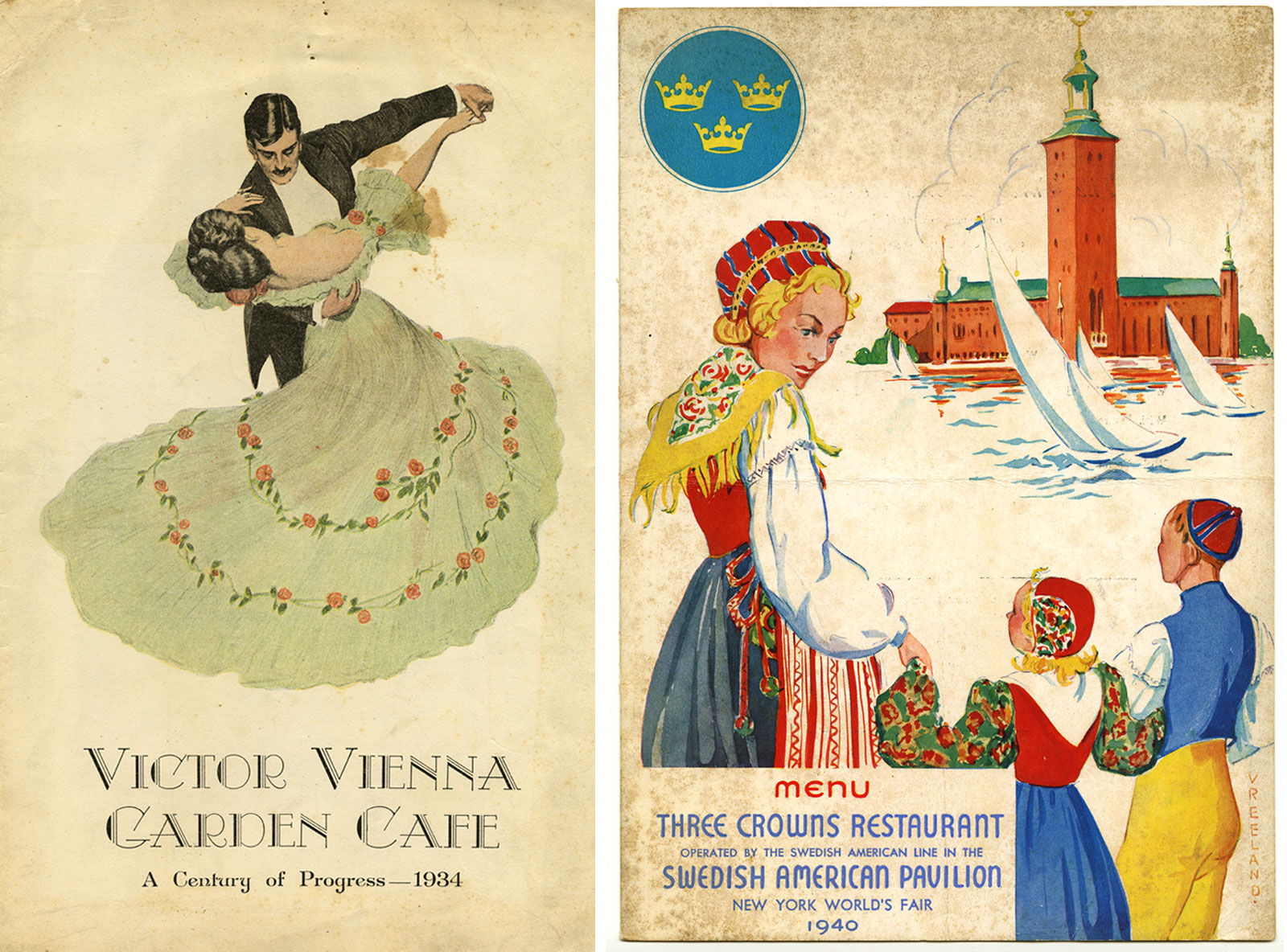
While none of these items are included in What's on the Menu, there are plenty of other beautifully illustrated menu covers and associated ephemera presently on display that residents and visitors to South Florida can peruse in person. See the library portion of the installation, What's on the Menu: Destination Dining, through September 29.
